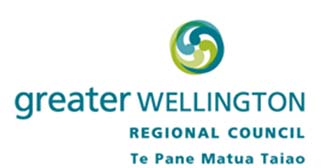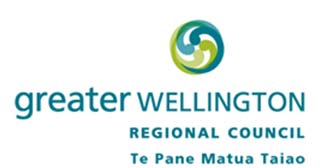
 By email
By email
Shed 39, 2 Fryatt Quay
Pipitea, Wellington 6011
2 August 2019
PO Box 11646
Manners Street
Wellington 6142
File Ref: OIAP-7-11835
T 04 384 5708
F 04 385 6960
Andrew Crow
www.gw.govt.nz
[FYI request #10682 email]
Dear Mr Crow
Request for information 2019-231
I refer to your request for information dated 5 July 2019, which was received by Greater Wellington
Regional Council (GWRC) on 5 July 2019. You have requested the following information:
“I am keen to know why services do not run, what happens if a service is not run, how you
ensure rate payers are getting value.
I request under OIA:
1. How many train services have not run over last few months? Detailed data for
cancellations for at least three months. (Full year if possible)
2. Cause of cancellation. Either as cause per cancellation or other relevant data that show
why services did not run.
3. Any penalties for not running a service. This must include what penalties are in any
contract and COULD have been enforced. Also must include what penalty WAS enforced per
incident of a service not running.
4. Any other documents that show how WRC is ensuring the public get value for the costs of
subsidising the services.”
GWRC’s response follows:
Metlink rail service reliability
We began publishing monthly performance data for Metlink bus and rail services by route/line,
including performance against the Reliability measure (whether a trip ran or not), on the Metlink
website from February 2019 onwards. Performance reports covering February, March, April, May
and June of this year are currently available at the following address:
https://www.metlink.org.nz/on-our-way/performance-of-our-network/ (in the ‘Metlink Monthly
Performance Report’ drop-down section.)
 Rail service Reliability KPI failures including cancellations
Attachment 1
Rail service Reliability KPI failures including cancellations
Attachment 1 contains a workbook summarising Wellington-region rail services that failed to meet
the ‘Reliability’ key performance indicators between July 2017 - June 2018.
Data in each worksheet may be filtered according to interest or relevance.
To aid understanding of the data, please note the following column definitions:
Journey: trip ID of each individual service.
Line: HVL (Hutt Valley line), JVL (Johnsonville line), KPL (Kāpiti line), MEL (Melling
line), WRL (Wairarapa line).
Peak/Off-peak: Metlink defines the ‘Peak’ period as before 9am and between 3pm and
6:30pm on weekdays. The ‘Off-peak’ period is defined as all other times, including all day
on weekends and public holidays.
Direction: ‘Inbound’ = southbound services to Wellington. ‘Outbound’ = northbound
services to various destinations.
Attribution Group(s): ‘BOL’ abbreviation = Block of Line, or planned schedule of bus
replacements.
Rail cancellations due to mechanical or track maintenance issues
Metlink is in the middle of a programme of deferred maintenance and service enhancements being
delivered by network owner, Kiwirail to improve the capacity and resilience of the rail network.
Planned and unplanned service disruptions may occur while this work is underway. More
information is available on the Metlink website via the following link:
https://www.metlink.org.nz/on-our-way/making-your-train-journeys-better/
Rail cancellations due to staff shortage
Many of the cancelled services across the Wellington public transport network in the last few
months have been due to staff and driver shortages. As you may be aware, the current shortage of
bus and train drivers in the Wellington region is part of a wider national shortage affecting other
regions’ public transport networks and associated transport industries such as trucking.
Transdev made a presentation to the Council’s Sustainable Transport Committee on 20 March 2019
on its driver shortage issues. The minutes of this meeting are available at:
http://www.gw.govt.nz/committee-meetings-calendar/detail/7546.
Since then, Transdev has run a successful staff recruitment campaign that has generated significant
public interest in becoming a Metlink train driver, with 205 applicants in 18 days following
RESPONSE TO OIA 2019-231 ANDREW CROW
PAGE 2 OF 4

campaign commencement. However, it takes around 12 months to train a train driver; the effects of
staff shortages on Metlink rail network performance are likely to be felt for some time.
Performance deductions
Metlink operators are subject to contracted performance measures, and failure to meet these
measures may result in deductions to the contract payment for that service. The Reliability measure
is one of the measures whose failure triggers a deduction (barring any extenuating circumstances out
of the operator’s control).
GWRC withholds the monetary value of the performance deductions applied to its contractors, on
the grounds that making it available would be likely to unreasonably prejudice the commercial
position of the operator, and that withholding the monetary value of the performance deductions is
necessary to enable GWRC to conduct commercial negotiations without prejudice or disadvantage.
The relevant sections of the Act applicable in this case is section 7(2)(b)(ii).
In GWRC’s opinion the release of the performance deductions could unreasonably:
Prejudice the commercial position of the operator; and
Prejudice the commercial positon of the operator in relation to any current or future tenders.
We have considered whether the public interest in the information withheld outweighs GWRC’s
need to withhold the requested information. As a result, we do not consider that the public interest
outweighs GWRC’s reason for withholding the information under the grounds identified above.
Documents that show how GWRC is ensuring the public get value for the costs of subsidising
Metlink services
The Wellington region’s public transport funding policies are set out in the following statutory
documents:
Long Term Plan (LTP) available at: http://www.gw.govt.nz/long-term-plan/
Regional Land Transport Plan (RLTP) available at: http://www.gw.govt.nz/RLTPlan
Regional Public Transport Plan (PT Plan) available at: http://www.gw.govt.nz/rptp/
Subsidies for public transport are partly funded by regional rates and the National Land Transport
Fund. When evaluating programmes and projects, the Government Policy Statement on Land
Transport requires all regional councils and the NZ Transport Agency to consider best value for
money.
Consistent with national policies, Section 3 of the LTP includes value for money as one of the key
principles to ensure expenditure on any activity provides maximum impact and effectiveness.
RESPONSE TO OIA 2019-231 ANDREW CROW
PAGE 3 OF 4


To ensure value for money for users, ratepayers and taxpayers, the LTP takes an integrated approach
to the planning, funding and operation of the public transport network, and requires regular reviews
of the network and services to make sure they continue meeting the needs of the community.
The current funding approach in the LTP also sets targets for allocation of funding in a way that
enables equitable distribution of costs among users, rate payers and national funding while
recognising the various benefits that users and rate payers get from the network.
The strategic approach in the RLTP and the PT Plan is to continually improve Wellington’s public
transport network to ensure that public transport services provide value for money for users and tax
payers.
Policy 8.a of the PT Plan specifically intends to improve value for money from existing public
transport funding by procuring performance-based operating contracts, implementing network
improvements and service reviews, and promoting existing services.
The PT Plan also aims to deliver an integrated fares and ticketing system that is simple and easy to
use and provides better value for money for customers. The changes to fares and ticketing in 2018
offered significant improvements for users through more consistent and affordable fares and
provided greater value for public funding through a significant growth in patronage.
Through independent annual surveys, GWRC also collects information on how satisfied or
dissatisfied Metlink public transport users are with the value for money of the fares they pay. This
information identifies where major improvements are required. The survey reports are available on
the following page: https://www.metlink.org.nz/on-our-way/performance-of-our-network/ , under
the ‘Customer Satisfaction Survey’ drop-down menu.
Information about national public transport funding policies are available on NZTA’s website at:
https://www.nzta.govt.nz/planning-and-investment/planning-and-investment-knowledge-base/
If you have any concerns with the decision(s) referred to in this letter, you have the right to request
an investigation and review by the Ombudsman under section 27(3) of the Local Government
Official Information and Meetings Act 1987.
Yours sincerely
Greg Pollock
General Manager, Public Transport
RESPONSE TO OIA 2019-231 ANDREW CROW
PAGE 4 OF 4





